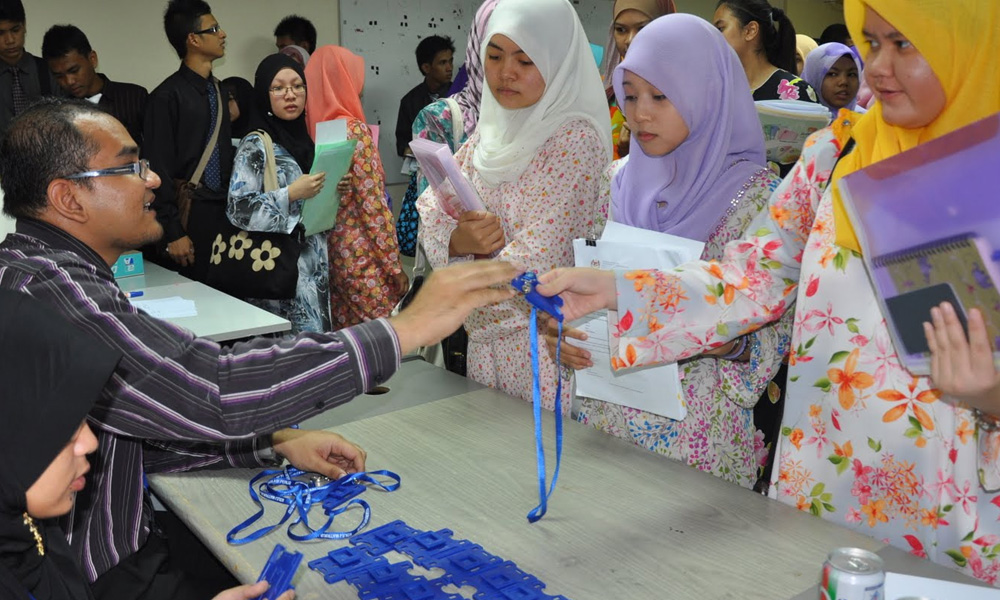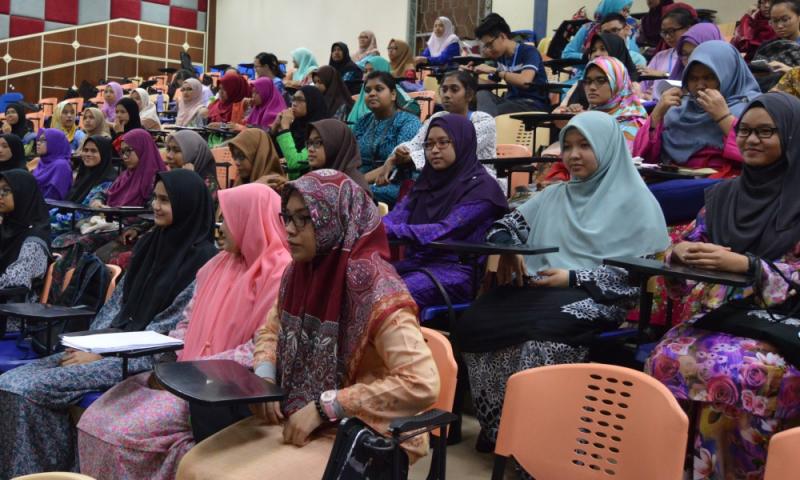Handling matriculation mess, overhauling pre-university admissions
COMMENT | Malaysia’s matriculation system faces much deeper challenges than the ongoing tussle over ethnic slices of the pie.
Matriculation colleges offer an easier route to university, and reserve 90 percent of enrolment for bumiputera. Understandably, many non-bumiputera are unhappy with their restricted opportunities in this fast track to university, especially compounded by the alternative STPM most have to take, which is more difficult, yet is placed on par with matriculation grades when applying for university.
In recent years, either as a pre-election promise or post-election reward, both BN and Pakatan Harapan governments have declared matriculation quotas for Indian and Chinese students.
Lately, various people and organisations have vocally pressed for an increase to the 10 percent non-bumiputera quota, or have brought various criticisms and proposals to the public domain. Others are defending the 90 percent bumiputera quota.
Cabinet just decided to keep the status quo, but increase overall enrolment. The government punts the problem into the future – but all sides are also presenting rather parochial and half-baked ideas.
The main deficiency in the matriculation system is that it under-equips students academically. However, the programme is providing access to higher education, and to the government’s credit, a large share of students – 60 percent by the latest reports – come from B40 families. To be clear, these are bumiputera B40 students.
The breadth of matriculation college outreach is immense, which is why it is so difficult to remove it abruptly, especially when it does not cultivate academic rigour and confidence. The grievances of non-bumiputera not getting access are valid, so are the anxieties of bumiputera who fear the door to university will close on them without the quota’s safeguard.
Various people and groups have aired arguments and proposals, notably from a few wakil rakyat and Harapan figures. We should welcome these contributions to the public discourse; this never happened under BN’s rule. These outspoken Harapan leaders, to their credit, go beyond merely demanding more spaces for non-bumiputera. However, some aspects are problematic; I hope they welcome critical feedback.

PKR's Petaling Jaya MP Maria Chin Abdullah (photo) correctly points out the problem of matriculation colleges in under-equipping students. But she omits the direct implication of her argument: should bumiputera flock back to Form Six? If so, how? She also asserts that no one should be left behind, hinting that the disadvantaged should not be excluded, but also suggesting that matriculation entry is an educational right.
The argument also implies that without a quota, more students of other ethnicities can enter matriculation. But this enrols them in the programme she just pointed out was academically deficient. I’m left quite confused.
A group of 20 DAP leaders take the STPM case further, calling for a 50-50 share of STPM and matriculation in university admissions immediately, and for the eventual replacement of the matriculation system with the STPM. They also propose need-based rather than race-based selection criteria.
But it does not help their cause that they distinctly, albeit implicitly, advocate the interests of minority groups and not the balance of all groups’ interests, and that the burden of adjustment to their proposals disproportionately falls on the majority who currently depend on matriculation quotas.
PKR Youth’s Ong Jing Cheng also supports need-based rather than race-based support. Whether the racial diversity and group identity of various forms can totally be omitted as a consideration in the admissions process, however, remains an overhanging question.
DAP’s Satees Muniandy proposes the reservation of 25,000 slots for bumiputera – with no stance on the role of merit or need in selection – and 7,000 for non-bumiputera. But on the latter, he specifies that entry should be strictly on merit.
He is apparently thinking of top-scoring students who didn’t get into matriculation, who are understandably upset. But should they be the only prospective beneficiaries of a revised system? What about disadvantaged Indians and Chinese who may not be as competitive on academic scores alone?
PKR's Segamat MP Edmund Santhara proposes a formula comprised of three segments: Bumiputera quota, non-bumiputera quota, open and merit-only competition. Again, socioeconomic disadvantage has no clear place in the selection process.
More worrisome, though, is his proposal to tap alcohol and gambling taxes to increase matriculation enrolment for non-bumiputera. He seems to be pragmatic in taking one steady revenue stream that other programmes might not want to be associated with, and some countries do channel lottery earnings to infrastructure, sports development, etc.
Post-secondary education is national priority
But this recirculation is particularly ill-designed, because it bears an ethnic profile, of items that certain ethnic groups consume and education quotas for those ethnic groups. Malaysia must not go down this path; post-secondary education is a national priority and should draw on general public revenue.
The complexity of the matriculation programme’s woes complicates the crafting of compromises and constructive solutions. However, the following three elements are clear to me.
First, we should expand the scope for giving preference to disadvantaged students, striving to look at other criteria besides race. Regular secondary school graduates could be given some preference over residential school counterparts.
The B40 approach is here to stay, but to better account for geographic differences in income levels and cost of living, we can vary the thresholds state by state.
The current practice of one national B40 cut-off surely excludes residents of higher income states who grow up in socioeconomically disadvantaged settings. Based on the Household Income and Basic Amenities Survey Report, in 2016, the national B40 cut-off was RM4,400, but ranged from RM2,600 in Kelantan to RM3,300 in Sabah, RM4,800 in Johor and RM6,200 in Selangor. Changes to the selection procedure can be done in the nearer future, and refined along the way.

Second, we should avoid holding narrow, absolutist and dogmatic positions, and instead of campaigning for tertiary educational access on the grounds of rights and guarantees, anchor the process on principles of fairness and justice.
Curiously, most who profess “pure merit” admissions allow for “need-based affirmative action” – which inevitably entails some departure from pure meritocracy: disadvantaged students admitted through need-based considerations, on average, have lower grades or less impressive credentials. The notion of “pure merit” misleads and unduly inflates expectations.
Construing university education as a basic right is problematic. It is not compulsory, unlike primary schooling, and at some point, secondary as well. We cannot expect the government to guarantee every applicant's admission at the tertiary level, let alone in one specific programme like matriculation.
Of course, we should minimise the disappointments of those who do not gain entry, but again, it is entirely reasonable, and more than sufficient, to allocate opportunity by taking into account academic ability and potential, balanced with socioeconomic disadvantage and equitable representation – not just ethnicity, but region, class, etc.
To achieve diversity may require direct measures that consider group identity – not to override academic grades, but as a complementary consideration.
Some form of apportionment should be worked out. I would start by setting aside a portion of admissions for selection solely based on academic achievement, then another portion that takes into account socioeconomic background, and a third to foster equitable representation.
Third, pre-university programmes will require a major overhaul, to raise the rigour and versatility of their academic content. Ultimately, there is no running away from the need to reinstate a common entry to university. However, I don’t see how redirecting masses of bumiputera away from matriculation – especially back to STPM – will be tenable.
I’m also not convinced that STPM serves the country well. It is a difficult exam and an internationally recognised certificate, but it also sustains the regurgitation and rote learning mode just like the rest of the schooling system. Moreover, a shockingly miniscule 10 percent of STPM graduates take the science stream these days.
Matriculation enrolment is 77 percent in science, 19 percent accounting, and five percent technical. The science-leaning composition meets the programme’s objectives, but on the whole, it is rather reactive and static in seeking to redress gaps in bumiputera participation in past decades, rather than more proactively and dynamically imbuing knowledge and capability. The structure and ethos are outdated.
All public pre-university programmes warrant a thorough remake. In fact, we seem to have settled on a consensus that the education system must shift toward inculcating critical and creative thinking, but the policy treads lightly when it comes to matriculation/STPM.
The BN-launched Malaysian Education Blueprint (MEB) aspired to make matriculation internationally recognised. Successive governments have hardly, if ever, made public commitments to raise the quality of the programme.
The MEB also outlined a “rebranding” of the STPM – dispensing with uniforms, introducing new modules involving group work and independent research – which were to be achieved by the end of 2013, the very first year of the blueprint. One measly year?
The Harapan government is also taking things one year at a time. That’s not long enough, and not good enough.
DR LEE HWOK AUN is a senior fellow at ISEAS - Yusof Ishak Institute.
The views expressed here are those of the author/contributor and do not necessarily represent the views of Malaysiakini.
RM12.50 / month
- Unlimited access to award-winning journalism
- Comment and share your opinions on all our articles
- Gift interesting stories to your friends
- Tax deductable
